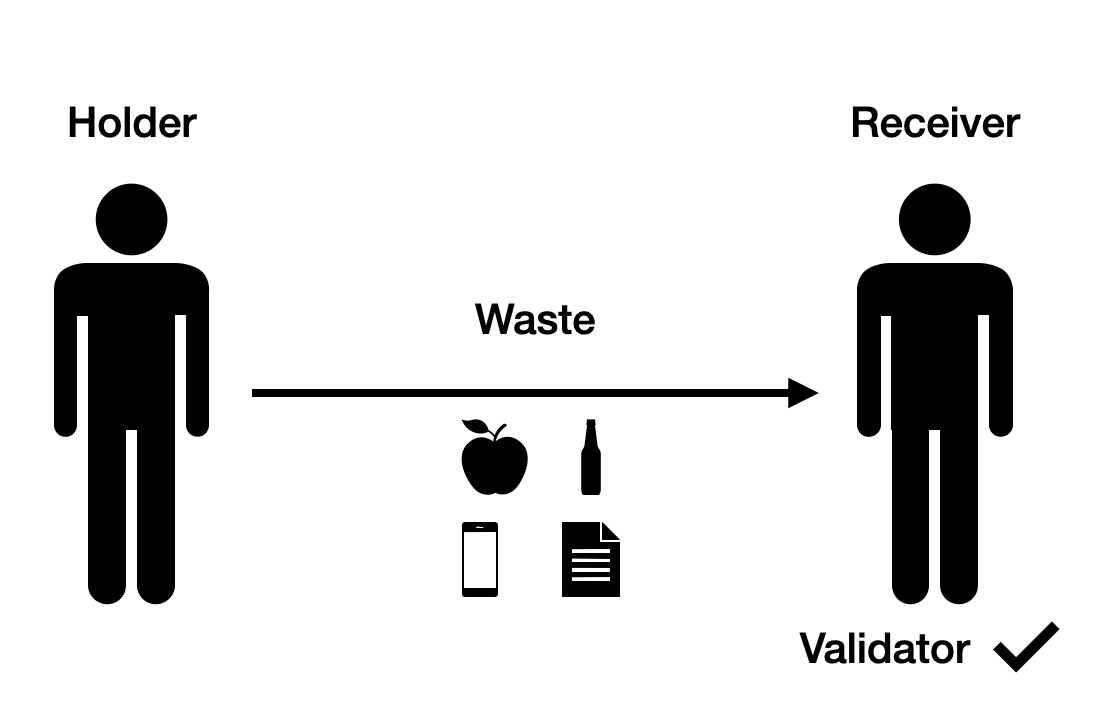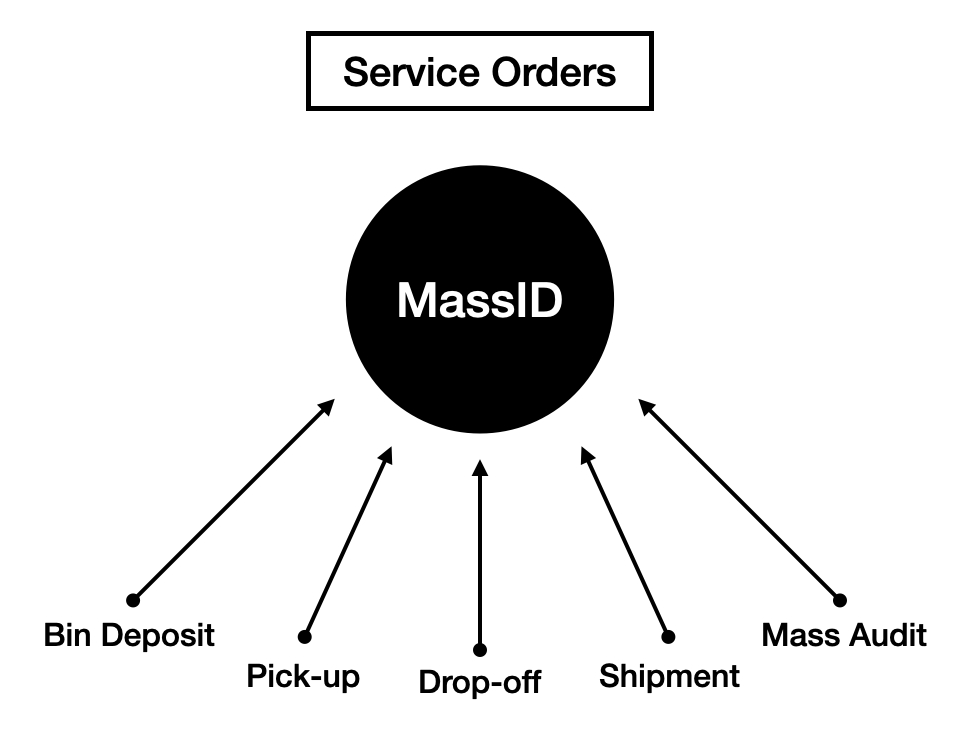Validators & SOs
Material (waste) transfers always occur between two persons, a holder and a receiver of a material mass, who represent themselves and their companies or organizations. Confirmation and validation of mass content, such as weight, quality and source, is always performed by the receiver of the material, identified as the Validator (V) and updated to the MassID through each logistics operation. The Holder will always have access to the Validation data and be able to contest it.

Logistical events that post modification to a MassID are performed through service orders (SO), of which there are five primary types:
Bin deposit: between a Waste Generator and Bin Custodian (V)
Pick-up: between a Bin Custodian and a Hauler (V))
Drop-off: between a Hauler and a Processor (V) or Recycler (V))
Shipment: between a Processor, Hauler and Recycler (V) involving both a pick and a drop-off operation
Mass Audit: performed by a third-party Auditor (V) at a Processor or Recycler

Last updated